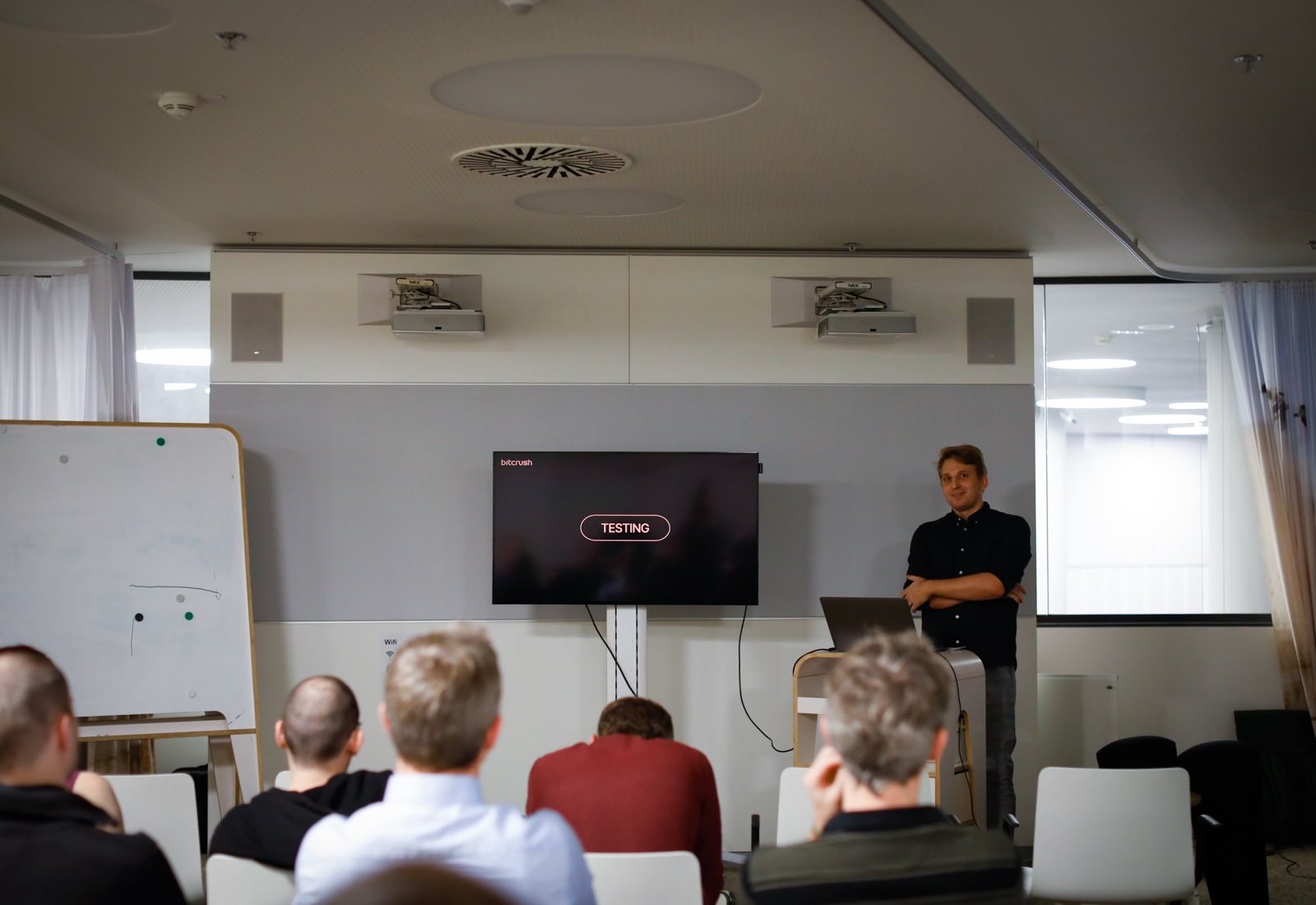Location
ÖBB HQ
2 Am Hauptbahnhof, 1. Floor, Vienna 110
Date and time
Thursday, December 7 · 6 – 10pm CET
printf(“Hello, world!\n”);
Embedded Austria brings together innovators, thought leaders, and enthusiasts in the field of embedded systems to foster collaboration, learning, and the exchange of groundbreaking ideas. Austria has a rich tradition of embedded software excellence, and Embedded Austria aims to create a platform that showcases and advances our country’s contributions to the global tech community.
Talks
>> Accelerating Embedded Software Testing using AI Toolsby Bernhard Trinnes – Bitcrush Testing
>> Embedded Linux Security: The Good, the Bad and the Uglyby Richard Weinberger & David Gstir – sigma star GmbH
>> Flutter on Embedded Linuxby Stefan Larndorfer – sequality GmbH
>> From Pixels to Insights: An Eye on the Edge AIby Dejan Đukić
Accelerate Embedded Software Testing with AI Tools
Discover how AI-powered tools are revolutionizing embedded software testing, enabling faster, more efficient, and more accurate testing of complex embedded systems. Learn how AI can help to create unit tests, identify potential defects, and optimize test execution – eventually leading to significant improvements in software quality and reliability.
About: Bernhard Trinnes is the founder of Bitcrush. He is a long-term embedded software developer with a strong focus on application development on embedded Linux. With Bitcrush he supports companies to test their embedded systems to help them reach their quality goals.
LinkedIn: https://www.linkedin.com/in/bernhardtrinnes/
Embedded Linux Security: The Good, the Bad and the Ugly
Linux-based embedded systems are not uncommon these days, but they still have some rough edges, especially regarding security. In their talk, David and Richard will outline common problems they encounter when working with their customers on embedded systems. The goal is to make you aware of these critical pitfalls you should definitely avoid in your next project.
About: Richard Weinberger is co-founder of sigma star gmbh where he offers consulting services around Linux and IT security. Upstream he maintains various subsystems of the Linux kernel such as UserModeLinux and UBIFS. Besides of low-level and security aspects of computers, he enjoys growing lithops.
LinkedIn: https://linkedin.com/in/penguinwarrior
About: David Gstir is a security researcher and software engineer at sigma star gmbh with 15+ years of hands-on experience in designing, engineering, and auditing software for various use cases. He obtained a master’s degree in computer sciences from the University of Technology Graz, Austria where he specialized in IT security and cryptography.
LinkedIn: https://linkedin.com/in/david-g42
Flutter on Embedded Devices
In December 2018, Google presented the Flutter framework 1.0. This framework aims to be a cross-platform library for developing user interfaces. Starting with the focus on mobile platforms, there are now also backends for Windows, Linux desktop, MacOS and embedded Linux. The technical architecture of the rendering engine currently relies on an independent layer for native OpenGL or Vulkan support. In order to support native code integration, you can work with so-called “platform channels”. In the talk, we demonstrate an implementation of a Flutter application on a NXP i.MX8 and discuss practical aspects of how to use this approach in industrial embedded software projects.
About: Stefan Larndorfer is the CEO of sequality software engineering and manages various embedded software projects in the areas of automotive, industry automation and medical engineering. Together with his team at sequality.at he develops innovative software solutions based on embedded Linux, C++ and HTML5. He is also a lecturer for C++ Qt at the Upper Austrian University of Applied Sciences in Hagenberg and supervises student projects and diploma thesis.
LinkedIn: https://www.linkedin.com/in/stefan-larndorfer/
Pixels to Insights: An Eye on the Edge AI
In the rapidly evolving landscape of artificial intelligence, the emergence of edge devices as potent platforms for AI execution stands out as a transformative development. These devices, embedded within our daily environments, possess the capability to perceive, analyze, and act—all in real time. This talk delves into the state of AI on the edge, spotlighting the latest advancements, key enablers, as well as how to get started quickly with helping your edge device to see.
About: With over half a decade of experience building AI solutions, Dejan has delved into diverse domains ranging from leveraging patient imagery for improving clinical diagnostics to developing real-time video analysis tools for consumers, and presently, pioneering computer vision in additive manufacturing. At the heart of his work is the mission to endow devices with the power to see and act intelligently.
LinkedIn: https://www.linkedin.com/in/dejandjukicdd/
